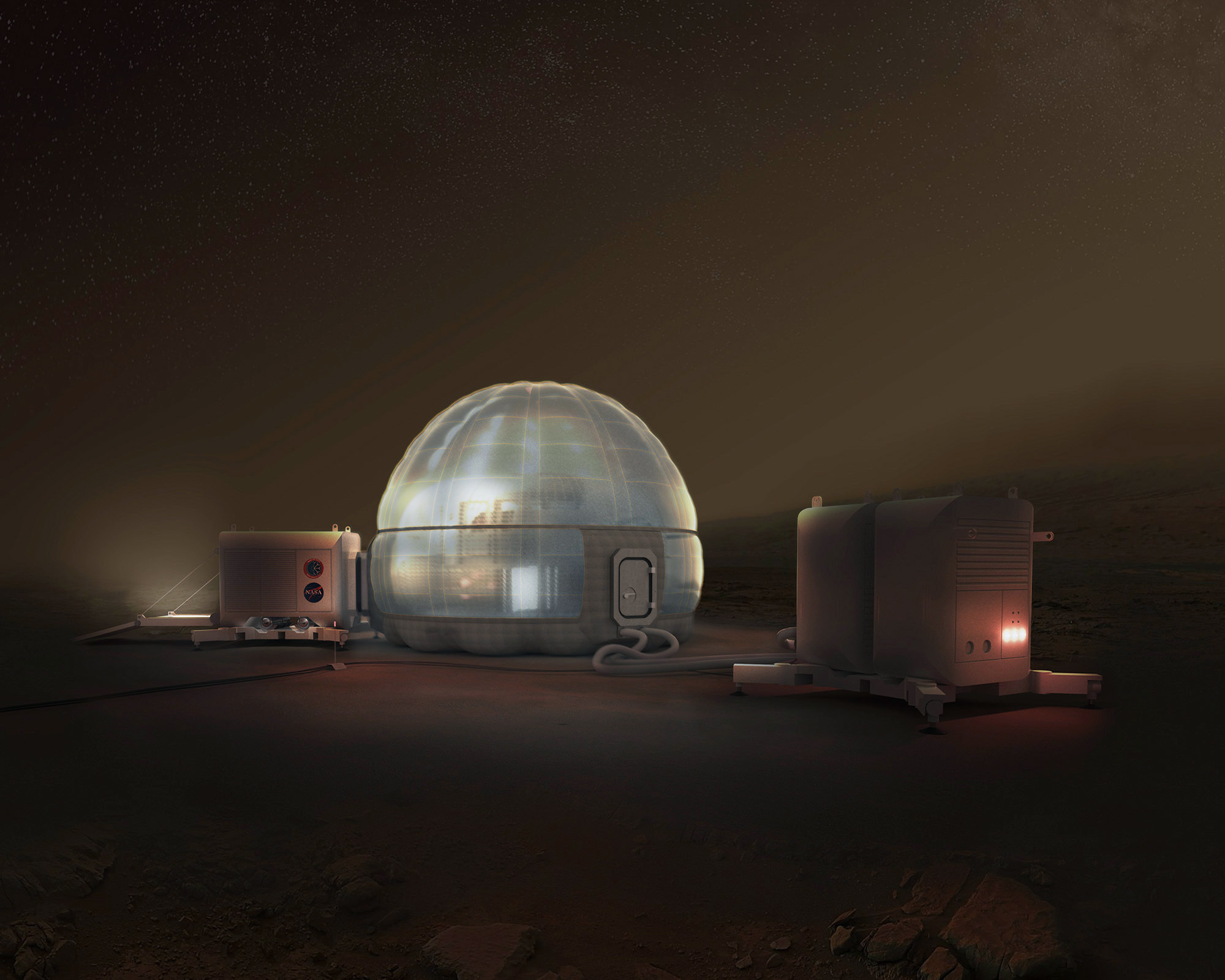Mars Ice Home is a collaborative project with NASA Langley Research Center to develop a feasibility study for a habitat made of ice on Mars.
Mars Ice Home is a feasibility study conducted at NASA Langley Research Center in 2016 in collaboration with SEArch+ and CloudsAO. Responding to the problem of galactic cosmic radiation being the most significant issue for human health on long duration Mars surface missions, the concept incorporates in situ resource utilization derived water-ice for radiation shielding and as a structural component.
The study proposes design and engineering solutions for: The Inflatable Structure Element, the Deployment Systems Element, and the Access and Delivery Element of the overall habitat. The water-ice fills and freezes within cellular pockets of the precision-manufactured inflatable membrane. The interior of the habitat will be insulated from the ice with a cellular layer of carbon dioxide, which can easily be extracted from the Martian atmosphere.
Long term stays on the Martian surface require habitats with reduced launch mass while providing an effective working environment with a high level of shielding from galactic cosmic rays for mission crew members. Translucent ice is the key design element in this circumstance: it allows natural light to permeate the habitat interior, keeping occupants connected to diurnal cycles, and ensuring the well-being of crew members. For more, visit: A New Home on Mars: NASA Langley’s Icy Concept for Living on the Red Planet.









